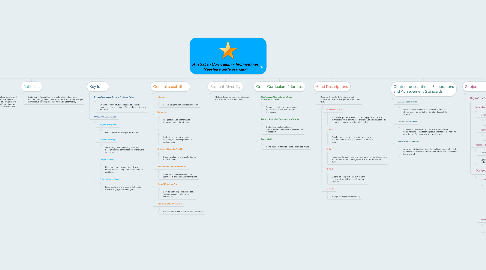
1. Aims and Objectives
1.1. Students are to become aware of how technology has changed over time. They are to use critical and creative thinking when deciding the 'what, how and when' of technology usage and its impact on a sustainable future. They can identify problems and use digital technologies to create solutions, then evaluate and discuss their findings.
2. Rationale
2.1. Students will think critically and make informed decisions about technology and its uses. All students will be able to apply knowledge, skills and processes when using technology.
3. Key Ideas
3.1. Overarching Ideas: Creating Preferred Futures
3.1.1. Creating preferred futures, recognise benefits, impacts and consequences of technology, now and in the future.
3.2. Thinking in Technologies
3.2.1. Project Management
3.2.1.1. Plan, organise and complete activities.
3.2.2. Systems Thinking
3.2.2.1. Generating ideas and finding solutions. Recognising the connectedness of the world around us.
3.2.3. Design Thinking
3.2.3.1. Using strategies to understand design needs, finding and evaluating creative solutions to problems.
3.2.4. Computational Thinking
3.2.4.1. Finding solutions to problems that can be solved using digital technologies.
4. General capabilities
4.1. Literacy
4.1.1. Use language to communicate and learn.
4.2. Numeracy
4.2.1. Interpret and use mathematical knowledge in real life situations.
4.3. ICT
4.3.1. Understand how to use digital technologies to solve problems and evaluate data.
4.4. Critical and Creative Thinking
4.4.1. Generate, clarify and evaluate data to solve problems.
4.5. Personal and Social Capabilities
4.5.1. Understand themselves and others. Learn social protocols and mannerisms.
4.6. Ethical Understanding
4.6.1. Develop a strong personal and social outlook, manage conflicts and behaviours.
4.7. Intercultural Understanding
4.7.1. Value students own culture and that of others.
5. Band Descriptions
5.1. Describe the content descriptions and achievement standards expected in each band level.
5.1.1. Foundation - Yr 2
5.1.1.1. Students explore materials, tools and equipment, prepare instructions when solving problems and use digital systems to create and share information safely online.
5.1.2. Yr 3 & 4
5.1.2.1. Develop social protocols, use digital systems and peripheral devices and collect and interpret data.
5.1.3. Yr 5 & 6
5.1.3.1. Recognise the sustainability of information systems for current and future devices, create games, animations and online quizzes.
5.1.4. Yr 7 & 8
5.1.4.1. Expand on computational thinking and engage with a wide range of information systems
5.1.5. Yr 9 & 10
5.1.5.1. Engage with specialised learning
6. Cross Curriculum Priorities
6.1. Aboriginal and Torres Strait Islander History and Cultures
6.1.1. Students learn to value and appreciate the history and culture of the first Australians.
6.2. Asia and Australia's Engagement with Asia
6.2.1. Understand the technological connectedness between Australia and the Asia region.
6.3. Sustainability
6.3.1. Using digital systems to create a preferred future.
7. Content descriptions, Elaborations and Achievement Standards
7.1. Content descriptions
7.1.1. Describe what teachers will teach and students should learn. Highlights the interrelatedness of the strands.
7.2. Content Elaborations
7.2.1. Expand on content descriptions to ensure a shared understanding of the teaching requirements but are not a full description of the only way to teach the unit.
7.3. Achievement Standards
7.3.1. Achievement Standards state the quality of learning for each band level to enable the student to enter the next achievement learning level.
8. Student Diversity
8.1. All students are entitled to an education that is tailored to suit their needs.
9. Subjects and Strands
9.1. Digital Technologies
9.1.1. Knowledge and Understanding
9.1.1.1. Digital Systems
9.1.1.1.1. Components of digital systems
9.1.1.2. Representation of Data
9.1.1.2.1. How data is represented
9.1.2. Process and Production Skills
9.1.2.1. Collect and analyse data
9.1.2.2. Define, design, implement, evaluate and collaborate.
9.1.3. Design and Technology
9.1.3.1. Knowledge and Understanding
9.1.3.1.1. Technologies and Society
9.1.3.1.2. Technologies Contexts
9.1.3.2. Process and Production
9.1.3.2.1. Investigate, generate, produce, evaluate and collaborate.
